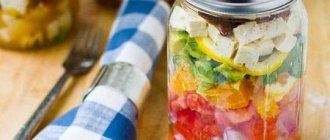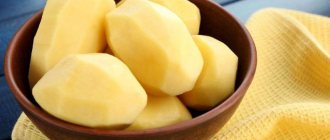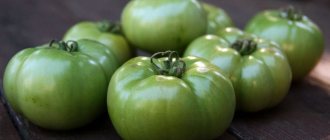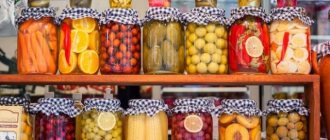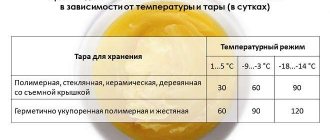/Order/
How much, where and how to store vegetables in an apartment depends on what temperature, level of humidity and lighting a particular type needs. So, for example, cabbage and carrots should be stored in the refrigerator, and potatoes and onions should be stored in a kitchen cabinet drawer; some foods should be placed in airtight containers, and some should be left in nets or paper bags.
In this material you will find useful tips, as well as a brief reminder on storing large and weekly supplies of vegetables, herbs and herbs.
A few general principles
- Store vegetables separately from fruits. The fact is that apples, pears, bananas and apricots emit ethylene, a gas that accelerates the ripening and spoilage of nearby fruits and vegetables.
- Store tomatoes, potatoes and peppers separately (including separately from each other). They also emit ethylene and greatly affect the taste and quality of other vegetables. So, for example, next to a tomato, carrots and beets will become bitter, and potatoes next to peppers will quickly sprout.
- Always cut off the tops of root vegetables. Before putting carrots, beets, radishes, turnips and other root vegetables in the refrigerator, you need to trim their tops, leaving only a small tail 2.5 cm long to protect the vegetable from drying out. Also, before storing root vegetables, they need to be cleaned of any remaining soil with a soft brush.
- Wash vegetables and herbs (except greens) only before eating, and not in advance. It is very convenient to wash all the products at once before putting them in the refrigerator, but it turns out that this speeds up the spoilage of plant products. But greens can be washed before storing by soaking them in a sink of water.
- Store vegetables in loose and perforated bags and containers. Make sure your vegetable storage bag has holes to allow good air flow. In this case, the fruits should lie loosely in the package, because the closer they are located to each other, the faster they begin to rot.
See also the material: How to store fruit at home - general principles, instructions and photo ideas.
Approximate temperature for storing vegetables and fruits - table
| Name of fruits (vegetables) | Storage conditions (temperature) |
| Vegetables | |
| ripe avocado | from plus 3 to plus 13 degrees |
| unripe avocado | from plus 7 to plus 10 degrees |
| artichoke | 0…+2 degrees |
| eggplant | +7…+12 degrees |
| broccoli | within 0 degrees |
| swede | within 0 degrees |
| mushrooms | within 0 degrees |
| green pea | +0.5…+2 degrees |
| summer squash | +5…+10 degrees |
| winter squash | +10 degrees |
| early cabbage | -0.5…+0.5 degrees |
| late cabbage | 0…+1 degree |
| Brussels sprouts | about 0 degrees |
| Chinese cabbage | about 0 degrees |
| early potatoes | +3…+10 degrees |
| late potatoes | +3…+10 degrees |
| sweet corn variety | about 0 degrees |
| onion | -2 to +2 |
| green onion variety | 0…+1 |
| carrot | -0,5…+0,5 |
| cucumbers | +7…+13 |
| parsnip | about 0 |
| squash | from 0 to +10 |
| sweet pepper variety | +7…+13 |
| hot pepper variety | from 0 to +10 |
| unripe tomato | +10…+21 |
| ripe tomato of any variety | +7…+21 |
| early spring radish | about 0 |
| winter variety of radish | about 0 |
| turnip | about 0 |
| green type of turnip | about 0 |
| beet | from 0 to +2 degrees |
| pumpkin | within +10…+13 degrees |
| dried beans | +4…+10 degrees |
| cauliflower variety | within 0…+1 degrees |
| Fruits | |
| apricot | -1…0 degrees |
| quince | -1…+0.5 degrees |
| a pineapple | +7…+13 degrees |
| orange | from -1 to +10 degrees |
| watermelon | +2…+21 |
| unripe banana | +13…+21 |
| ripened banana | from +13 to +16 |
| grape | -1…+2 |
| cherry | -0,5…+2 |
| blueberry | from 0 to +1 |
| pomegranate | -3 to +10 |
| grapefruit | +10…+16 |
| pear | -2…0 |
| melon | within 0…+13 degrees |
| blackberry | 0…+1 |
| strawberries | within 0 |
| kiwi | from 0 to +2 |
| cranberry | +2…+6 |
| strawberry | 0…+0,5 |
| lime | +9…+13 |
| lemon | +2…+14 |
| raspberries | -0,5…0 |
| mango | +10…+13 |
| mandarin | 0…+8 |
| nectarine | -0,5…0 |
| peach | -1…0 |
| plum | -0,5…+1 |
| currant | -0,5…0 |
| persimmon | 0…+2 |
| cherries | -1…+2 |
| blueberry | 0…+2 |
| prunes | -0,5…0 |
| apple | -1…+4 |
| gooseberry | -1…0 |
Reminder for storing vegetables
Potato
Where and how to store potatoes: Potatoes do not tolerate long-term storage in the refrigerator, since at low temperatures starch begins to turn into sugar. But potatoes love dark (in the light they become tasteless and even toxic), cool (+5°C to +7°C) and dry (no more than 85% humidity) places. Therefore, cellars, storage rooms, insulated garages or balconies are best suited for storing large stocks. Small supplies of potatoes can be stored in an apartment in a kitchen cabinet or, say, under the sink. A week's supply of potatoes can live on the bottom shelf of the refrigerator. Before storing the tubers, you need to sort them out, leaving only healthy and strong potatoes (winter stocks should be sorted out 2 more times during the winter).
Time frame: 3 weeks in an apartment, and up to 5-6 months in ideal conditions.
cucumbers
Where and how to store cucumbers: in the refrigerator.
Time frame: 5 days.
Tomatoes
Where and how to store tomatoes: at room temperature, for example on a countertop or in a cupboard. Tomatoes cannot be stored in the refrigerator - at temperatures below 10 degrees they lose their aroma and become tasteless. If you need to store tomatoes for more than three days, then you can put them on the bottom shelf of the refrigerator, and then restore the aroma and taste by keeping the fruit at room temperature for about 1 day.
Terms: 3 days – optimal shelf life for ripe tomatoes.
Tip: To ripen unripe tomatoes, keep them in a paper bag at room temperature (see photo below).
Garlic
Where and how to store garlic: Garlic can be stored in a cabinet or on a countertop, in a pantry or cellar. The main thing is that air circulates freely around it. Garlic cannot be stored in the refrigerator, as at low temperatures it quickly loses its aroma and taste.
Time frame: 2 months.
Onion
Where and how to store onions: Onions can also be stored in a closet or on a countertop, in a pantry or cellar. The main thing is that air circulates freely around it.
It is best to store onions in mesh bags (which they are often sold in in stores) to get this ventilation. If there is no mesh, you can place the bulbs in a bowl and, if desired, cover them with a breathable cloth, but not with a lid.
It is not advisable to store whole onions in the refrigerator, but it is better to store chopped onions there and for no more than 4 days.
Time frame: 2 months.
Cabbage (white and red)
Where and how to store cabbage: in the refrigerator, on any shelf.
Time frame: 2 weeks.
Brussels sprouts, savoy sprouts, Chinese sprouts, cauliflower
Where and how to store: in the refrigerator.
Time frame: 1 week.
Carrot
Where and how to store: in the refrigerator.
Time frame: 2 weeks.
Sweet pepper
Where and how to store peppers: in the refrigerator, away from other vegetables.
Timing: 1 week (green pepper); 5 days (red, yellow and orange peppers).
Chili pepper (fresh)
Where and how to store: in the refrigerator.
Time frame: 2 weeks.
Note: Dried chilies will keep for 4 months in an airtight container.
Broccoli
Where and how to store broccoli: in the refrigerator, on any shelf.
Time frame: 1 week.
Beetroot and its tops
Where and how to store beets: in the refrigerator. Before storing in the refrigerator, the tops (which are very useful, by the way) need to be cut off and placed separately in a plastic bag.
Time frame: 3 weeks, tops – 3 days.
Eggplant
Where and how to store eggplants: in the refrigerator.
Time frame: 5 days.
Zucchini, zucchini and pumpkins
Where and how to store zucchini: in the refrigerator, cellar or other dry, dark and cool place.
Time frame: 5 days.
Avocado
Where and how to store avocados: in the refrigerator.
Time frame: 3 days.
Tip: To ripen an unripe avocado, keep it at room temperature in a paper bag until soft.
Artichokes
Where and how to store: in the refrigerator.
Time frame: 1 week.
Ginger
Where and how to store ginger: in the refrigerator.
Time frame: 3 weeks.
Tip: Ginger can be frozen for up to 6 months. If you want to grate the ginger, you don't have to defrost it.
Mushrooms
Where and how to store mushrooms: in the refrigerator, preferably in a paper bag.
Time frame: 1 week.
Turnip
Where and how to store turnips: in the refrigerator.
Time frame: 2 weeks.
Tip: Turnip leaves are very useful, so they are often used to prepare medicinal decoctions. Separate the tops from the root crop and store them separately in a plastic bag. The leaves will remain fresh for 3 days.
Radish
Where and how to store radishes: in the refrigerator.
Time frame: ideally up to 3 days, but 2 weeks is possible.
Tip: Remove leaves from root vegetables to prolong their freshness.
Asparagus
Where and how to store: in the refrigerator. Before storing, you need to trim the ends of the asparagus (see photo), and then wrap it in a damp towel and put it in a plastic bag.
Time frame: 3 days.
Leek
Where and how to store: in the refrigerator. Before storing, cut off and discard the dark green tops of the leeks, leaving the roots intact (see photo).
Time frame: 1 week.
Mustard
Where and how to store: in the refrigerator.
Time frame: 3 days.
Okra
Where and how to store: in the refrigerator, in a paper bag.
Time frame: 3 days.
Peas, English and snap peas
Where and how to store: in the refrigerator, leaving the pods until consumed.
Time frame: 4 days.
Rhubarb
Where and how to store: in the refrigerator.
Time frame: 1 week.
Tip: Rhubarb leaves are not recommended to be eaten in large quantities as they can be toxic.
Swede
Where and how to store: in the refrigerator or in the closet.
Terms: 1 week – at room temperature, 2 weeks – at low temperature.
Vegetables, fruits and herbs stored in the refrigerator
Some vegetable crops retain their properties well in low temperatures. The refrigerator is an ideal place to store the following types of vegetables:
- mushrooms;
- fresh greens, lettuce (lettuce, romaine, arugula, iceberg);
- cabbage of all types (white cabbage, Brussels sprouts, Chinese cabbage, cauliflower, broccoli, kohlrabi);
- freshly picked berries (currants, gooseberries, strawberries, raspberries);
- daikon, all varieties of radish;
- corn cobs;
- fresh green beans.
In most cases, the storage temperature of vegetables ranges from +5...+10°C.
In urban conditions, storing vegetables in the kitchen at this temperature is only possible in the refrigerator on the warmest shelf. Store lemons, eggplants, sweet peppers, tomatoes, cucumbers, and zucchini there.
Reminder for storing herbs and greens
Greens (parsley and dill)
Where and how to store greens: in the refrigerator. Small bunches can be stored in glasses of water as bouquets (see photo).
Time frame: 5 days.
Shallot onion
Where and how to store shallots: Can be stored in a cupboard or on a countertop, in a pantry or cellar. The main thing is that air circulates freely around it.
Time frame: 1 month.
Spinach
Where and how to store: in the refrigerator.
Tip: No matter what the fresh leaves look like, follow the expiration date on the package as bacteria can develop.
Lettuce salad
Where and how to store: in the refrigerator.
Time frame: 5 days.
Tip: Even if the leaves look fresh, follow the expiration date on the package.
Watercress
Where and how to store: in the refrigerator.
Time frame: 4 days.
Celery
Because celery is porous, it is especially vulnerable to absorbing odors from other foods.
Where and how to store: in the refrigerator.
Time frame: 2 weeks.
Leafy herbs (basil, cilantro, green onions, tarragon, parsley, mint)
Where and how to store greens: in the refrigerator.
Time frame: 3 days (basil, cilantro, green onions, tarragon); 5 days (parsley, mint).
Tip: Wrap a bunch of greens in a damp paper towel before storing to keep them fresh longer.
Woody herbs (rosemary and thyme)
Refrigerator: 2 weeks.
Arugula
Where and how to store: in the refrigerator.
Time frame: 5 days.
Radicchio salad
Where and how to store: in the refrigerator.
Time frame: 4 days.
What doesn't keep in the refrigerator
Cold has a detrimental effect on some plant products. Let us list in which case it would be correct to store vegetables in the kitchen without a refrigerator:
- Potato. The starch from potato tubers turns into sucrose in the refrigerator, which makes the product taste overly sweet. It is also impossible to store it in a hot kitchen; heat causes the root vegetable to dry out. Place the potatoes in the box. Place it in a dark, fairly humid corner of the kitchen, away from the gas stove and other heating appliances. The maximum storage temperature for vegetables should be +15°C.
- Garlic. Garlic heads in the refrigerator quickly grow, the cloves become rough, fibrous, and the sharpness disappears.
- Watermelons and melons. Store melons in the pantry, in the dark, where they acquire a pleasant aroma and rich sweet taste, the optimal storage temperature is about +20°C. Store cut melons and watermelons in the refrigerator, cover the cut with cling film;
- Onion. Store it along with potato tubers. At low temperatures, the bulbs soften and begin to emit a pungent putrid odor. In addition, this aroma can permeate nearby food.
- Avocado. This overseas product turns black in the refrigerator; it is better for it to ripen on the kitchen table;
- Basil. This greenery will be better preserved if a bunch is placed in a glass of water and exposed to the sun. In the refrigerator, the herb withers, saturating the food in the neighborhood with its aroma.
To preserve the freshness and nutritional value of food, you need to know not only how to store vegetables in the refrigerator, but also how much. The table below for storage periods and temperatures for vegetables will help you with this.
| Vegetables | Storage period, days | Storage temperature, °C | Relative humidity, % |
| Eggplant | 10-15 | +8..+12 | 85-90 |
| cucumbers | 10-15 | +10..+11 | 90-95 |
| Broccoli | 10-14 | 0 | 90-95 |
| Kohlrabi | 25-90 | 0..+2 | 95-100 |
| White cabbage | 20-210 | 0..+1 | 90-95 |
| Cauliflower | 20-30 | 0..+1 | 90-95 |
| Red cabbage | 90-180 | 0..+1 | 90-95 |
| Radish | 7-21 | +1..+2 | 95-100 |
| Carrot | 30-240 | 0 | 90-95 |
| Late potatoes | 90-200 | +4..+6 | 90-95 |
| Early potatoes | 30-90 | +4..+6 | 90-95 |
| Beet | 30-210 | 0 | 90-95 |
| Bow-feather | 7-10 | 0..+1 | 95-100 |
| Onion | 30-180 | +0,5..+1,5 | 65-70 |
| Leek | 20-90 | 0..+1 | 90-95 |
| Greens (parsley, celery) | 10-25 | -0,5..-1 | 95-100 |
| Garlic | 90-210 | +1..+2 | 65-70 |
| Spinach | 10-14 | 0..+2 | 95-100 |
| Salad | 7-21 | 0..+2 | 95-100 |
| Endive | 14-21 | 0..+2 | 95-100 |
| Hot pepper | 14-21 | +7..+10 | 95-100 |
| Sweet pepper | 12-20 | +8..+9 | 95-100 |
| Patissons | 7-21 | +5..+10 | 90-95 |
| Zucchini | 14-21 | +7..+10 | 90-95 |
| Zucchini | 7-14 | +5..+10 | 90-95 |
| Ripe tomatoes | 7-14 | +8..+11 | 90-95 |
| Green tomatoes | 21-28 | +13..+20 | 90-95 |
| Avocado | 14-28 | +7..+13 | 85-90 |
By adhering to the recommendations listed, you can extend the shelf life of vegetables to the maximum without losing valuable vitamins. Enjoy the variety of tastes given to us by nature and be healthy!
Storing carrots and cabbage
Carrots must be stored in a box covered with sand.
It is very difficult to preserve carrots, as they require a lot of attention. After harvesting it from the garden, under no circumstances should it be washed, as this can lead to the development of various diseases. It is placed in boxes and sprinkled with sand or onion peels and put in a cellar or on a balcony, where the temperature should be from +2 to +4°C.
The surest way to preserve carrots is to grind them or cut them into cubes and put them in the freezer.
Cabbage can be stored in the cellar in a suspended state.
Cabbage is stored at a lower temperature, closer to 0°C with deviations of +/-1°C. It can be stored in the refrigerator, in insulated boxes on the balcony, shelves or hanging in the cellar. You can use newspaper and wrap each head of cabbage and place them at a short distance from each other in a cool place. Of course, the best place to store cabbage is the cellar, since in winter there are the most favorable conditions for storing cabbage: high humidity, low temperature and good ventilation. The floor on which you will lay the cabbage in nets must be covered with oilcloth to prevent it from coming into contact with the ground or other dirty surface.
When storing cauliflower, the same conditions are created. The only thing is that you can’t put cauliflower in nets; there should be a separate net for each head of cabbage to increase air access. Each net should be hung from the ceiling - this will keep the cauliflower fresh longer.
Tips for freezing vegetables for the winter
If you want to please yourself with vegetable dishes even in the off-season, you can put the fruits in the freezer. Thanks to the low temperatures, they will last much longer than in or out of the refrigerator.
Here are some tips to follow:
- Only clean, high-quality vegetables should be stored for long-term storage. They also shouldn't be overripe.
- The generally accepted temperature level for freezing food is 18 degrees below zero.
- For convenience, it is better to freeze vegetables in portions so that they do not turn into one block of ice.
- It is worth putting the freshest vegetables in the freezer.
- You can store vegetables in plastic bags or plastic containers.
Do you know any interesting ways or tips for storing vegetables? Share in the comments, we will be interested to know about them!
Common storage errors
Such a fastidious product to store as mushrooms often begins to deteriorate ahead of time - within a day after collection and processing. This may be due to many factors related to improper preparation and storage of the product.
The most common mistakes made during storage are:
- Store in tightly tied plastic bags. Due to the release of condensation, the contents of bags without periodic ventilation quickly begin to rot and deteriorate.
- Store open in the refrigerator next to strong-smelling foods. Mushrooms quickly absorb the odors around them, losing the richness of their aroma.
- Storing mushrooms of the same variety together. They have different storage characteristics, as well as excellent shelf life, so mixing them is not recommended.
- Adding insufficient vinegar to the marinade. In this case, it will not be possible to preserve the contents of the jars for a long time.
- Neglecting recommendations for pre-soaking the crop in a saline solution. It is this stage that often helps to preserve the mushrooms in their previous state for a long time, avoiding their spoilage.
Vegetable packaging and storage containers
It is useful to have a tray in the refrigerator in which vegetables can be placed in one row. This can be an empty container or just a substrate that is sold in supermarkets.
The basic rule is that you need to take smaller containers in order to maintain a stable chilled state of vegetables. It is recommended to use containers made of glass, plastic or food grade polyethylene.
Tip : When choosing containers for storing vegetables, give preference to containers made of transparent plastic. This makes it much easier to distinguish the type of product in the refrigerator compartment.
How to handle food before storage
Processing vegetables before placing them in the refrigerator preserves most of the vitamins.
Timely processing allows:
- Clean products from remaining dents and dirt from previous packaging.
- Protect from foreign odors.
- Stimulate beneficial microflora in the product.
- Find the possibility of additional storage of the product.
- Clean out the contents of the refrigerator.
Vegetables must be fresh, without damage or signs of wilting. Next, they must be rinsed under running water and dried. If necessary, peel. To prevent vegetables from absorbing foreign odors and becoming chapped, they are wrapped in cling film and placed in a sealed bag.
Tip: It is recommended to wash tomatoes, including unripe ones, in cold running water before eating, and pour boiling water over the seed potatoes.
Storing beets, onions and garlic
The beets also need to be placed in a box and covered with sand.
There are no problems with storing beets; you can do the same with them as with carrots, sprinkle them with sand and put them in a cool place where the temperature is +2-4°C. That is, a cellar or basement is a good place to store it. Beets are better preserved than carrots and potatoes, if they are properly harvested from the beds and the selection of shelf-stable varieties. The best option for storing beets is to keep them together with potatoes. You need to scatter the beets on top of it, and it will absorb excess moisture released by the potatoes, thereby protecting them from waterlogging.
Onions and garlic need to be braided and hung.
To preserve garlic and onions, they must first be thoroughly dried and placed in fabric or paper bags and stored on the bottom shelf of the refrigerator. Onions can also be stored at room temperature in well-ventilated drawers or boxes, in which holes must be made for good ventilation. Another reliable and old way to store onions is to braid them, if they still have feathers after harvesting, and hang them up. The optimal storage temperature for onions and garlic is from 0 to +6°C. But you should keep in mind: if you correctly removed the garlic and onions from the garden, then the shelf life will be extended.
Long-term storage of mushrooms
When harvesting a large harvest of mushrooms, there is always a desire to preserve them so that you can use them for preparing various dishes or eating them in their pure form until the next season.
This can be done, but in this case you will have to sacrifice their taste and freshness, since it will not be possible to preserve them in their original form for longer than 4-5 days.
There are three ways to store mushrooms for a long time: drying, freezing and pickling. Let's take a closer look at the implementation and features of each of them.
| Method name | How long is it stored? | ||
| 1 | Drying | 2-3 years | More details |
| 2 | Freezing | Up to a year | More details |
| 3 | Pickling | Up to a year | More details |
1
Drying
This method is most often used to prepare mushroom soups in the future, but the dried product can also be used in other dishes.
The essence of drying is to remove all moisture from mushrooms, which helps prevent the development of pathogenic microflora on them, thereby preserving the product.
You can do it using a special device or yourself. In the first case, you will just need to cut the mushrooms into slices, put them in a drying machine, start it up and leave it for several hours.
Self-drying is performed according to the following algorithm:
- The mushrooms are thoroughly washed, cleaned of stems and damage.
- Then they are cut into equal slices and laid out on a horizontal surface covered with paper towels to remove excess moisture. It is advisable that this place be well ventilated.
- A rope is tied to the mushrooms, which is then suspended over a fire (in this case, the product dries quickly, but there is a risk of burning) or on the balcony/pantry/shed to dry them naturally. The latter can take up to several weeks; its main disadvantage is that the product absorbs surrounding odors during the drying process.
You can store dried mushrooms in a jar or plastic bag in a dark and cool place.
2
Freezing
An easier way to preserve mushrooms, after which they can also be defrosted at any time and used for preparing various dishes.
Before freezing, it is recommended to blanch - briefly treating them with boiling water. This is necessary to neutralize pathogenic microflora and preserve the product in the freezer for a longer time.
Preparing the crop for freezing is as follows:
- Rinse it thoroughly, sort it and remove any damage.
- Soak the mushrooms for 15-20 minutes in a salty solution and then rinse.
- Throw them into boiling water for 1-2 minutes.
- If necessary, chop them or leave them whole.
- Place the harvest on a horizontal surface lined with paper towels and let dry.
- Transfer the mushrooms into prepared plastic containers or bags and place in the freezer.
Mushrooms are best stored in the freezer at a temperature of 15 to 20 degrees Celsius. If you follow all the steps and additionally blanch the products, you can store them for up to a year.
You can also freeze boiled mushrooms, but in this case the richness of their taste will subsequently decrease.
3
Pickling
Another effective, but difficult and time-consuming way to preserve mushroom harvest, which is not suitable for everyone.
Any mushrooms can be pickled, regardless of their variety and type. It is recommended to roll them into glass jars with a volume of 0.5 or 1 liter, closing with metal or glass lids, the type of which will also determine the shelf life of the jar (1-2 years, respectively).
Mushrooms are marinated as follows:
- The harvested crop is washed, sorted from debris and cleaned.
- Place clean mushrooms in a saucepan, add water and bring to a boil, then cook for another 15 minutes.
- Prepare the marinade - mix a liter of water, salt, sugar, spices to taste and vinegar. Bring the marinade to a boil and leave on the fire for another 10 minutes.
- Mix the boiled mushrooms with the marinade and leave to simmer for another 10 minutes.
- We put everything into a jar, roll it up and leave it to cool.
It is recommended to store jars in a cool and dark place at a temperature of 15 to 17-18 degrees Celsius with fairly high humidity (80-90%). In this case, you can save your favorite product until next season.
However, the shelf life of pickled mushrooms also depends on the recipe you use. The more vinegar added to the marinade, the more effective the preservation will be. In any case, if when opening the jar you notice that the lid is swollen, there is no need to consume its contents.
If fruits and vegetables are unripe
Some items are collected fully ripe, and some are not yet reached their own technological maturity. For example, bananas, so that they can be transported normally, are always picked green and they “arrive” already on the road and at vegetable warehouses. Also, some crops that grow in temperate climates, specifically tomatoes, are harvested and sold not quite ripe.
Advice! Half-green tomatoes reach technological maturity well in clay containers.
In fact, with rare exceptions, the following fruits and vegetables are always harvested when ripe:
- apricots;
- apples;
- peaches;
- papaya;
- plums;
- watermelons;
- kiwi;
- nectarine;
- pears;
- blueberries;
- figs
There are also products that are removed before they arrive, which allows them to remain fresh until sold:
- pineapples;
- cherries;
- paprika;
- eggplant;
- citrus fruits (tangerines, oranges, lemons, etc.);
- grape;
- strawberries;
- raspberries
This is explained by the fact that the listed fruits, when they have reached technological maturity, are difficult to transport, and their shelf life, even if all conditions and standards are met, does not exceed 1 week.
How to store
Every housewife is faced with the question: how to choose the right storage conditions for vegetables and at what temperature and how long to keep them so as not to spoil the harvest?
I will try to answer it, giving examples of the most common types of fruits.
Tomatoes
These vegetables have a thin skin and are almost 90% water, so for long-term storage you should strictly follow the recommendations: do not wash the fruits before storing and keep them at room temperature. If desired, tomatoes can be frozen, but in order for their taste not to be affected, it is necessary to strictly follow certain rules for preparing the fruit, which we described in detail on our website - see the article “How to store tomatoes.”
Onion
If we are talking about young onions, then they should be stored in the refrigerator, wrapped in soft paper in advance to avoid rotting.
Mature bulbs, on the contrary, are best kept in special boxes that do not interfere with air circulation at room temperature. I often hang a whole “braid” of onions right in the kitchen so that I always have them at hand.
Eggplant
Eggplants are not intended for long-term storage. Even in the refrigerator, they should not be kept for more than 3-6 days, as they begin to deteriorate. They retain their taste and beneficial properties best in a cool place, away from sunlight.
Asparagus
It is preferable to eat this delicate vegetable fresh in order to get the maximum nutrients from it. If you can't cook it right away, wrap the asparagus spears in damp paper towels or a thin natural cloth before placing them in the refrigerator compartment.
Potato
Potatoes are the root crop that is most often subject to long-term storage, and there are many recommendations for this, which you can learn about from the material on our website - read the article “How to store potatoes.” The basic rule is to keep potatoes in a cool, dry, well-ventilated place and away from sunlight, which can cause the tubers to green or sprout.
Carrot
Storing fresh carrots involves little hassle. It feels perfect in the refrigerator compartment for vegetables and fruits and can stay there for several weeks, remaining crisp and full of vitamins. The main thing is to ensure access of oxygen to this root vegetable, which means you should avoid storing it in closed plastic bags or containers. Remember also that you should wash and peel off the top layer only before direct use for food.
White cabbage, cauliflower and Brussels sprouts, broccoli
These vegetables can be stored for a relatively long time (from one to two weeks) without changing their taste. The main thing is to keep them in a cool place, for example, in a special compartment of the refrigerator, avoiding exposure to moisture, which provokes mold and rotting.
Corn
Fresh corn on the cob can be stored either simply in a cool place or in a separate compartment of the refrigerator. There is not much water in them, so they can sit for several weeks. However, I advise you to eat the cobs quickly, because over time they begin to dry out, lose their taste and become tougher.
Celery
Celery can be kept in the refrigerator for up to a week - it tolerates storage in a cool place quite well.
cucumbers
Cucumbers like to be cool and dry, but begin to spoil relatively quickly. Therefore, it is best to keep fresh fruits for no longer than a week in a special compartment of the freezer. If you want to learn more about the secrets of their long-term storage, you can read the article on storing cucumbers published on our website.
Zucchini
Zucchini and zucchini are similar to cucumbers in terms of basic storage rules. They also like to be cool and free of excess moisture and should not be kept in the refrigerator for more than one week.
Garlic
Garlic, like onions, prefers to be kept in dry, ventilated boxes where there is no direct sunlight. If you follow these simple instructions, you can store garlic bulbs all winter.
Lettuce and other greens
Lettuce and greens are perhaps the most tender representatives of vegetables. They must be stored in the refrigerator in a specially designed compartment. If the salad is in a bag, then it needs to be opened and air circulated. Before use, the leaves can be placed in a container of clean, cool water so that they are saturated with moisture. In addition, on our website you can find a detailed article on how to store greens.
Bell pepper
This vegetable can be stored in the refrigerator for about a week. It should be washed only before cooking.
Mushrooms
It is recommended to clean, cook or dry fresh mushrooms immediately after you buy them or bring them from the forest. In a pinch, they can be stored for a couple of days in a cool, dark place.
Store vegetables unwashed
Many of us, before storing vegetables and fruits, bring them “in divine form.” In other words, they wash and dry. This is very convenient, since the refrigerator does not become dirty, and the vegetable is immediately ready for use. However, experts do not advise rushing to wash off dirt and soil: washing accelerates the deterioration of plant products.
This rule does not apply to greens. Before storage, you can not only wash it, but also soak it in a sink with water.

